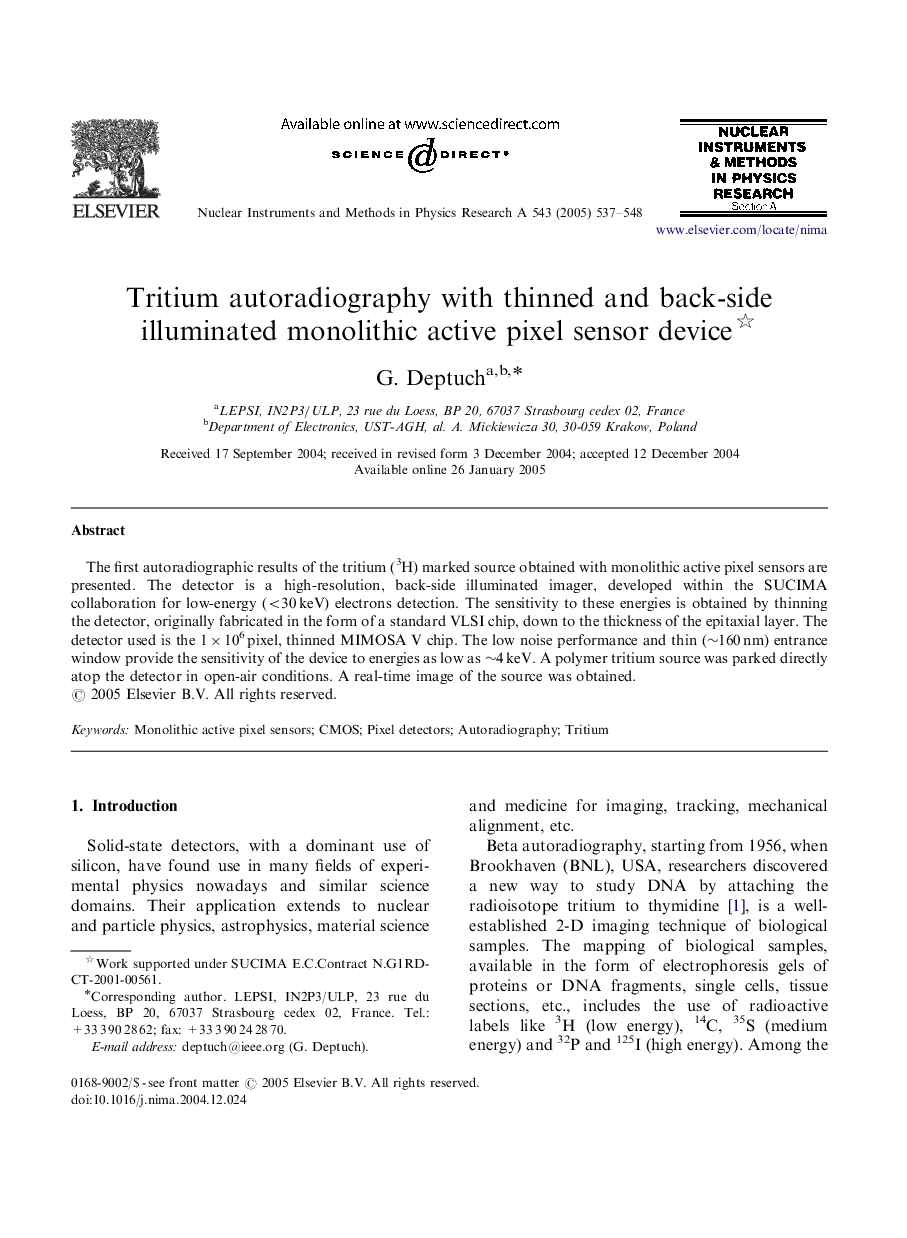| Article ID | Journal | Published Year | Pages | File Type |
|---|---|---|---|---|
| 9845528 | Nuclear Instruments and Methods in Physics Research Section A: Accelerators, Spectrometers, Detectors and Associated Equipment | 2005 | 12 Pages |
Abstract
The first autoradiographic results of the tritium (3H) marked source obtained with monolithic active pixel sensors are presented. The detector is a high-resolution, back-side illuminated imager, developed within the SUCIMA collaboration for low-energy (<30Â keV) electrons detection. The sensitivity to these energies is obtained by thinning the detector, originally fabricated in the form of a standard VLSI chip, down to the thickness of the epitaxial layer. The detector used is the 1Ã106Â pixel, thinned MIMOSA V chip. The low noise performance and thin (â¼160Â nm) entrance window provide the sensitivity of the device to energies as low as â¼4Â keV. A polymer tritium source was parked directly atop the detector in open-air conditions. A real-time image of the source was obtained.
Related Topics
Physical Sciences and Engineering
Physics and Astronomy
Instrumentation
Authors
G. Deptuch,
